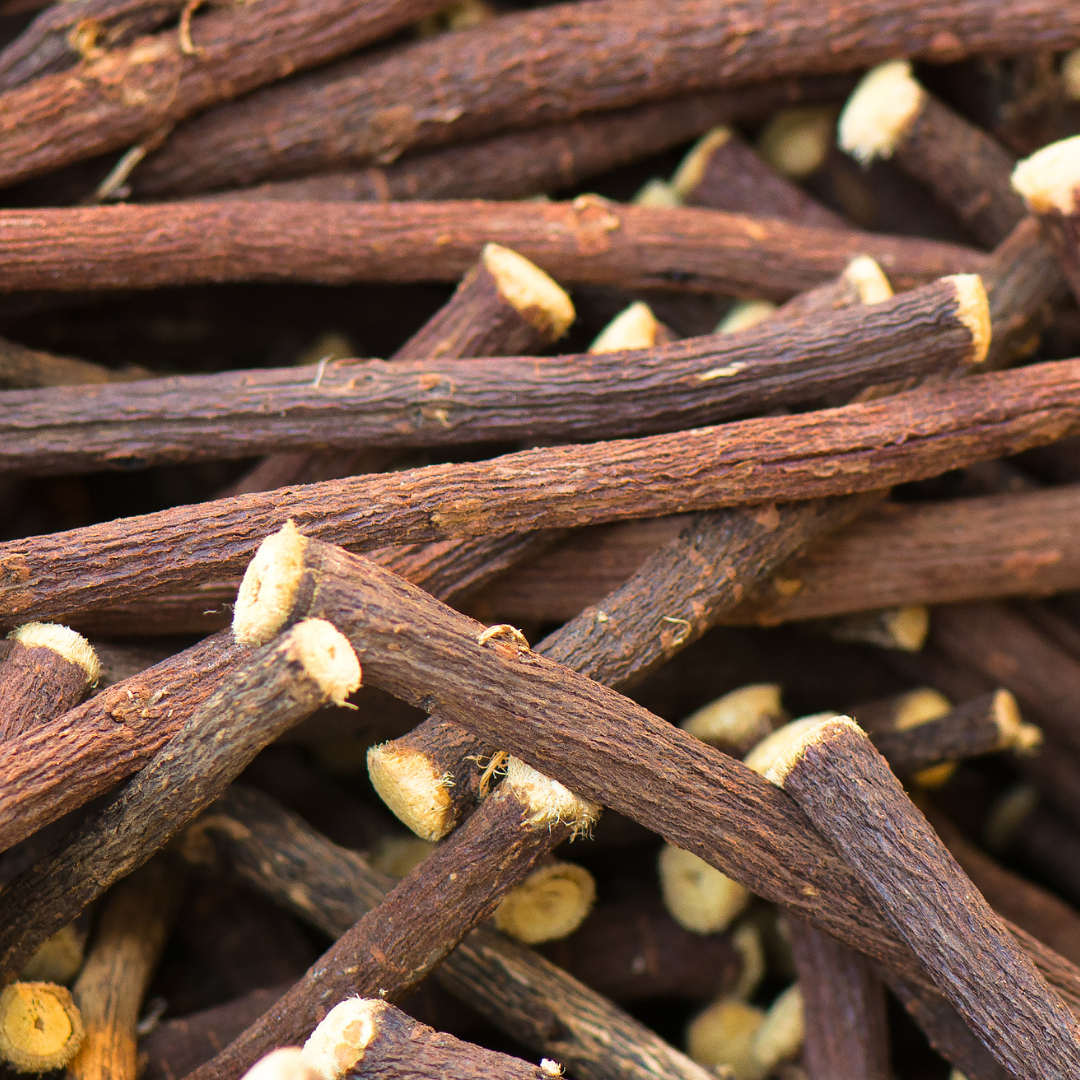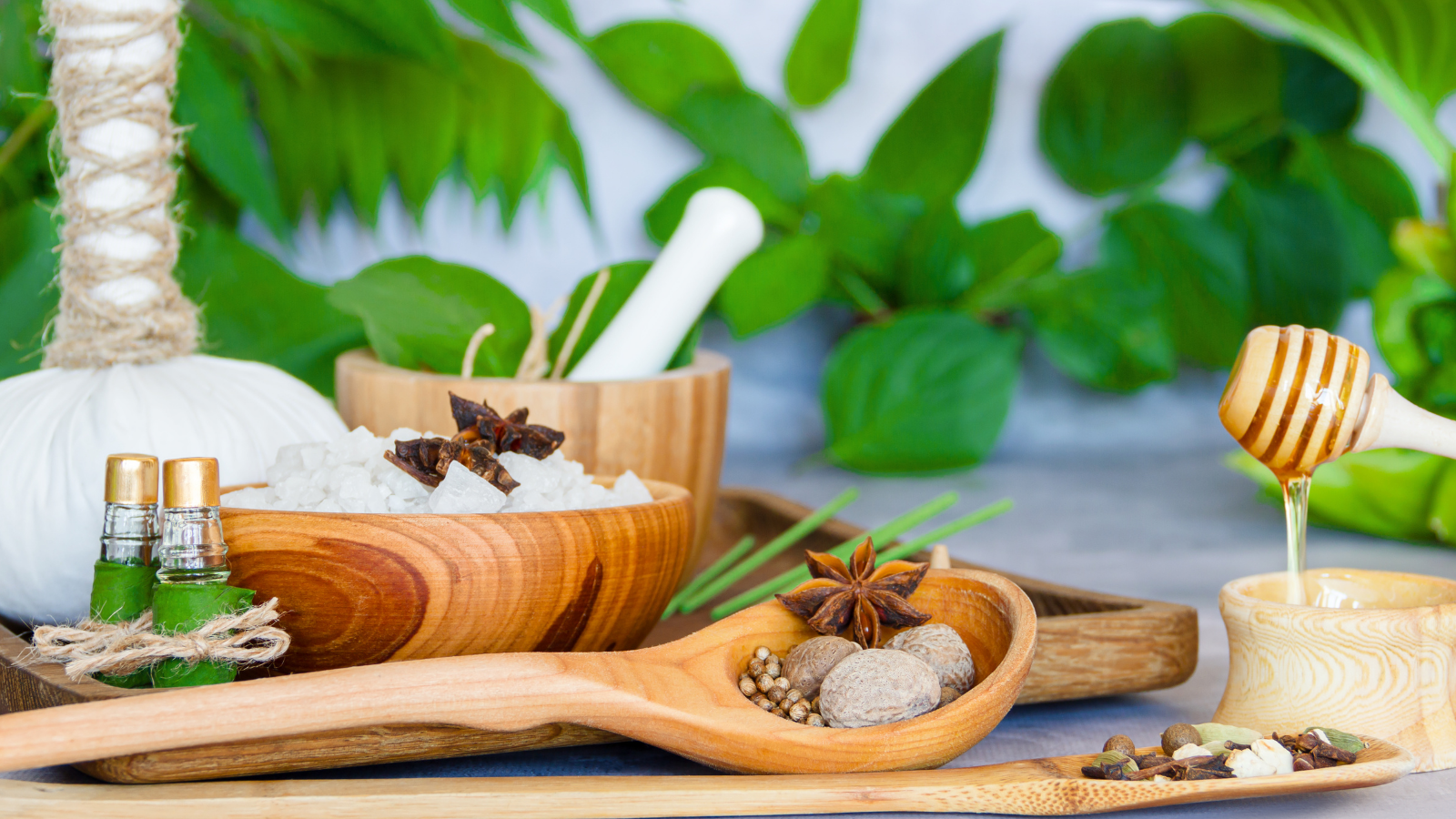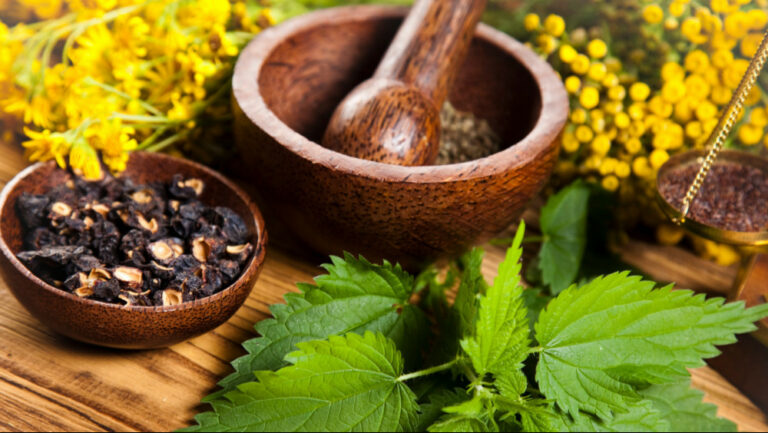An Overview Of Ayurveda
An Overview Of Ayurveda
Ayurveda views reproduction as a planned and systematic process to balance or alleviate vitiated Dosha in the parents through Panchakarma and modulating certain Dosha in the progeny through drugs, diet, and lifestyle changes.
What Is Ayurveda?
Ayurveda, also known as Ayurvedic medicine, is a traditional Indian medical system. Ayurvedic medicine is an example of a well-organized preventive and curative traditional healthcare system widely practiced in parts of Asia.
Ayurveda has a long history, possibly dating back to 3,000 years in India. Today, it is still a popular form of health care in many parts of the Eastern world, particularly in India, where a large percentage of the population uses it exclusively or in conjunction with modern medicine.
Ayurveda's History
Ayurveda is credited to Dhanvantari, the gods' physician in Hindu mythology, who learned it from Brahma. Its earliest ideas were laid out in the Atharvaveda section of the Vedas (c. 2nd millennium BCE).
Vedic medicine was practiced until around 800 BCE. The Vedas are rich in magical practices for disease treatment and charms for the expulsion of demons traditionally thought to cause diseases.
Fever (takman), cough, consumption, diarrhea, dropsy (generalized edema), abscesses, seizures, tumours, and skin diseases are the most common conditions mentioned (including leprosy). There are numerous herbs recommended for treatment.
The production of the medical treatises known as the Caraka-Samhita and Susruta-Samhita, attributed respectively to Caraka, a physician, and Susruta, a surgeon, marked the golden age of Indian medicine, which lasted from 800 BCE to around 1000 CE.
According to estimates, the Caraka-Samhita in its current form dates from the first century CE, though there were earlier versions.
The Susruta-Samhita most likely originated in the late centuries BCE and had settled into its current form by the 7th century CE. The treatises attributed to Vagbhata are of less importance.
These works laid the groundwork for all subsequent writings on Indian medicine, which looked at the human body in terms of earth, water, fire, air, ether, and the three bodily humours (vata, pitta, and kapha).
Ayurvedic Treatments
The Indian Medical Council was established in 1971 by the Indian government to maintain undergraduate and postgraduate education standards.
It establishes appropriate qualifications in Indian medicine and recognizes various traditional practices such as Ayurveda, Unani, and Siddha.
Projects have been launched to integrate indigenous Indian and Western medical practices. Most Ayurvedic practitioners work in rural areas, serving at least 500 million people in India alone.
As a result, they are a significant force in primary health care, and their training and deployment are critical to the Indian government.
Ayurveda, like scientific medicine, has both preventive and curative aspects. The preventive component emphasizes the importance of following a strict personal and social hygiene code, the specifics of which depend on individual, climatic, and environmental needs.
Physical exercises, herbal preparations, and Yoga are all part of the treatment plan. Ayurveda's curative aspects include herbal medicines, external preparations, physiotherapy, and diet.
It is an Ayurvedic principle that preventive and therapeutic measures be tailored to each patient's individual needs.
Benefits Of Ayurveda
1. Helps To Reduce your Body Weight
A healthy diet and modification in lifestyle habits through Ayurvedic treatments help shed excess body fat.
Weight is not a major concern in Ayurveda, but eating habits are. Allowing the body to detox through proper dietary restrictions allows for the achievement of a toned body.
Consult a practitioner to determine the best diet for your nutritional needs while also working with your dosha type.
Losing excess body fat is aided by a healthy diet and lifestyle changes facilitated by Ayurvedic treatments. In Ayurveda, weight is not a major concern, but eating habits are.
A toned body can be obtained by allowing the body to detox through proper dietary restrictions. Consult a practitioner to determine the best diet for your nutritional needs while also considering your dosha type.
Ayurvedic diets and relaxation techniques, according to the researchers, can help reduce plaque buildup.
Plaque is caused by an accumulation of cholesterol and fats in the inner lining of the artery. This is called atherosclerosis, the underlying cause of heart attacks and strokes.
2. Lowers Diseases
Ayurvedic medicine contains numerous herbs, vitamins, minerals, and proteins. These are combined in an appropriate dosage and administered in the proper time to prevent and treat immune-related disorders.
Ayurvedic herbs and essential oils increase blood flow, improve blood circulation, and remove toxins from the body through the skin. “Abhyanga massage” with herbal oils is a popular massage technique.
3. Improve Your Skin And Hair Health
Do you want your hair to be perfectly glistening and shiny? According to Ayurveda, you can avoid expensive clinical treatments by opting for organic and natural ways to achieve a glow without spending too much money.
A balanced diet, toning exercises, and Ayurvedic supplements are sufficient to promote healthy skin and scalp.
Ayurvedic general dietary guidelines emphasize the consumption of fresh food while considering your dosha type, medical history, regional produce, customs, and traditions. The emphasis is on high-antioxidant foods, herbs, teas, vegetables, protein, and healthy fats.
4. Stress Relief
With a fast-paced lifestyle that leaves little time for rejuvenation or relaxation, Ayurveda reduces stress and anxiety.
Yoga, meditation, breathing exercises, massages, and herbal treatments help the body relax, detoxify, and rejuvenate.
Yoga stimulates the autonomic nervous system, which keeps your mind alert and energized throughout the day.
Breathing exercises keep infections at bay and provide abundant oxygen to the cells, resulting in a sense of awareness. Shirodhara, Abhyangam, Shiroabhyangam, and Padabhyangam can treat depression and anxiety.
5. Reduces Inflammation
A poor diet, unhealthy eating habits, insufficient sleep, irregular sleep patterns, and poor digestion can cause inflammation.
Inflammation is the root cause of many diseases, including neurological disorders, cancer, diabetes, cardiovascular problems, pulmonary diseases, arthritis, etc.
The digestive system strengthens as you eat according to your dosha type. Eating certain foods at the correct times reduces toxins in the blood and digestive tract.
This results in increased vitality, high energy, and a general decrease in lethargy and mood swings.
Ayurvedic treatments are also well-known for cancer prevention. A combination of turmeric and black pepper is the best example of a herbal Ayurvedic formulation.
6. Improved Oral Health
Chewing sticks, twigs or roots of certain plants, such as Neem and Licorice, have been widely used since ancient times as an alternative to toothbrushes to maintain oral hygiene and are among the most well-known Ayurvedic products for oral health.
These chewing sticks have several dental health benefits, including increased salivary secretion, plaque control, and biting surface levelling.
Ayurvedic texts also recommend consuming Bilberry fruit (Vaccinium myrtillus) and hawthorn berry (Crataegus oxycantha), which help to stabilize collagen and strengthen gum tissue.
Licorice root (Glycyrrhiza glabra) has antibacterial properties and promotes anti-cavity action. Herbal toothpaste containing natural Ayurvedic ingredients such as Triphala, Lavang (clove), Pudina (Mint), and others are becoming more popular for naturally improving oral health.
7. Beneficial For Diabetes
Several Ayurvedic herbs and remedies have been shown to reduce glucose levels significantly.
Because of its high concentration of hypoglycemic biochemical substances, Karela (Bitter Gourd) juice helps control blood sugar levels and maintain healthy cholesterol.
Bitter Melon contains polypeptide-p, which naturally lowers blood sugar levels and thus has anti-diabetic properties.
Ayurvedic practitioners also advise people with diabetes to include Ayurvedic ingredients such as Turmeric Powder, Indian Gooseberry (Amla), Curry Leaves, and Black Plum (Jamun) in their diets.
8. Improves Sleep
Processed snacks, caffeine and alcohol, and ubiquitous electronics are just a few modern vices that can interfere with sleep.
Ayurveda's more balanced, time-tested approach to healthy eating and mindfulness may help you sleep better.
Aside from that, simple practices like rubbing an Ayurvedic oil like jasmine or coconut on your temples have a calming effect that may lull you to sleep.
Best Ayurvedic Herbs
1. Ashwagandha
Ashwagandha is a traditional Ayurvedic medicine with numerous applications. It can be found in India, Africa, and parts of the Mediterranean.
The name Ashwagandha is derived from a Sanskrit word in which Ashva means horse and Gandha means smell.
According to the traditional description, it can give a horse strength and stamina while nourishing the female and male reproductive and nervous systems.
It's also known as ‘Winter Cherry' or ‘Indian Ginseng.' Ashwagandha roots are commonly used in the preparation of Ayurvedic remedies.
2. Manjistha
Manjistha is a perennial climber that cleanses the lymph and blood of toxins. The lymphatic system removes waste from the body and controls the immune system.
Because lymph is pumped through muscle contractions, sedentary lifestyles may cause the lymphatic system to malfunction, resulting in higher toxic levels in the skin, joints, muscles, and other tissues.
Manjistha is a powerful lymph mover that soothes agitated Pitta and unclogs clogged Kapha.
Manjistha may help with many pitta-aggravated imbalances in the body, particularly those related to the blood.
It is a powerful Ayurvedic medicine for cleansing the liver, regulating kidney function, and clearing acne.
3. Brahmi
Brahmi, also known as Bacopa Monnieri, is an ayurvedic herb traditionally used to treat neurological disorders. It is anti-inflammatory and antioxidant. The leaves of this plant are thought to be very pure and effective.
4. Ajwain
Ajwain, also known as Trachyspermum ammi, is a humble carom seed used as a spice and the foundation of many home remedies. It has a distinct aroma and flavour.
Ajwain is a member of the Apiaceae family, which includes carrot, cumin, coriander, anise, asafoetida, and other spices. It was used as a medicine and a culinary spice by ancient Egyptian civilizations.
5. Shatavari
Shatavari is a medicinal herb that has numerous health benefits. Shatavari is also known as the “queen of herbs.”
Because of the presence of Saponins, it has antioxidant properties. It is extremely beneficial to your immune system and the female reproductive system.

6. Licorice
Licorice has been used in Indian, Greek, and Egyptian medicine preparations since ancient times. It has been used in various preparations due to its sweet flavour, including herbal teas, candies, capsules, and liquid extracts.
7. Amala
In Ayurveda, amala is a potent rejuvenating herb. It is primarily used to strengthen the immune system. It has high antioxidant levels.
8. Aloe Vera
The Egyptians revered Aloe Vera, also known as Ghrita Kumara in Sanskrit, as the “plant of immortality.”
Aloe was known for its anti-inflammatory and antibacterial properties in ancient Indian, Greek, Chinese, and Roman civilizations.
9. Neem
Neem is a well-known herb because of its bitter taste. “Neem” comes from the Sanskrit word Nimba, which means “bestower of good health.”
Neem has miraculous healing properties that can be used to treat various ailments. It is used in nearly 75% of Ayurvedic formulations.
10. Haritaki
Haritaki translates as “that which removes diseases and makes the body shine.” Haritaki has been used in India, Nepal, Thailand, and other Southeast Asian countries for healing and higher consciousness of mind.
Because of its ability to boost energy, intelligence, and awareness, it was dubbed the “King of Herbs” in India's Ayurvedic and Siddha healing systems. It is well known for being a Triphala herb.
Haritaki was so well-known in Buddhist culture that it was dubbed “The Supreme Nectar That Illuminates the Mind.” The dried fruit of the tree is used in traditional medicine.
Haritaki has a bitter taste and is high in vitamin C, antioxidant, and anti-inflammatory compounds.
Haritaki is a natural anti-viral, anti-fungal, antimicrobial, hepatoprotective, cardioprotective, anti-bacterial, hypolipidemic, antioxidant, immunomodulator, anti-diabetes, hypolipidemic, and wound healer used in Ayurveda.
11. Cardamom
Cardamom is one of the world's oldest spices. It grows abundantly in the Western Ghats of Southern India and Guatemala, the world's largest producers and exporters of this spice.
12. Turmeric
Turmeric is one of the world's most popular and extensively researched Ayurvedic spices. It is native to South Asia, particularly India, but it is also grown in other warm climates worldwide.
Turmeric's Latin name is “Curcuma longa,” derived from the Arabic name “Kurkum.”Turmeric, a member of the Zingiberaceae family, is known in Sanskrit as Kanchani, or the Golden Goddess.
Haridra, or the Yellow One, and Gauri, or the One with a Shining Face. It is used in Ayurveda for its anti-microbial, immunomodulator, liver function regulator, anti-arthritic, antioxidant, and anti-diabetes properties.
13. Guduchi
Guduchi, also known as Tinospora cordifolia, is a highly valued Ayurvedic herb for its rejuvenating, detoxifying, immune-boosting, and anti-rheumatic properties.
The name “Guduchi” means “protector.” The herb is native to India but is also found in Sri Lanka and Burma.
Guduchi is one of the three Amrit (nectar or ambrosia) plants, along with garlic and haritaki, according to Ayurveda. The roots, stems, and leaves of the Guduchi plant are all used for medicinal purposes, but the plant's bitter starch is the most important.
14. Amalaki
In Ayurveda, Amalaki is regarded as a potent rejuvenating herb. It is also known as Indian gooseberry or amla and is used as an Ayurvedic herb for hair growth and to boost the body's immune system.
Amalaki is native to tropical Southeast Asia and can be found in various parts of India, Sri Lanka, Pakistan, Malaysia, and the Mascarene Islands. Amalaki means “sustainer” in Sanskrit.
What Are The Ayurveda Doshas?
The five elements of Ayurvedic medicine are
- Aakash (space)
- Jala (water)
- Prithvi (earth)
- Teja (fire), and
- Vayu (air)
Each element, when combined, produces three humours, or doshas, known as Vata, Kapha, and Pitta.
These doshas are thought to be responsible for a person's physiological, mental, and emotional health.
Every person is said to have a unique ratio of each dosha, with one dominating the others. For example, one person may be predominantly pitta while another is predominantly Vata.
Ayurvedic practitioners can assist you in determining your dosha. A person's Ayurvedic constitution, or blueprint for optimal health, is said to be defined by their unique ratio of Vata, Kapha, and Pitta.
Though there is little evidence to support the legitimacy of doshas, many Ayurvedic practitioners point to a lack of research and funding on the subject.
Rather than dismissing the practice, they believe more research should be conducted to prove its effectiveness.
3 Types Of Doshas With Characteristics
Vata Dosha
Vata governs the energy of movement and is frequently associated with the wind. It's an energetic dosha associated with adaptability, creativity, and a free-spirited spirit.
It is linked to bodily functions such as breathing, muscle contraction, and heart function. A Vata-dominant person may be thin, frequently cold, have dry skin, or have racing thoughts.
Anxiety, fear, and digestive issues such as constipation can result from a vata dosha imbalance.
Pitta Dosha
Pitta is associated with fire and is thought to regulate the endocrine, metabolic, and digestive systems.
People who are predominantly pitta may have a medium build, experience frequent coldness, and have acne-prone skin. They are usually busy, successful, and on the go.
Pitta imbalance can cause rage, overexertion, burnout, skin irritation, and rashes.
Kapha Dosha
Kapha is associated with the elements earth and water. Stabilizing energy is thought to supply water to the body and keep the immune system in check.
A Kapha dominant person is calm, grounded, and forgiving. However, a Kapha imbalance can cause jealousy, sluggishness, and weight gain.
Conclusion
Ayurvedic medicine is popular today because of its emphasis on whole-body healing. An imbalanced dosha, according to Ayurveda, leads to poor health and disease.
As a result, choosing foods, exercises, and lifestyle habits based on your dosha promotes optimal health and balance.
Many Ayurvedic practitioners claim that one's dosha determines good health, but little evidence supports this.
I trust you enjoyed this article on An Overview Of Ayurveda. Please stay tuned for more blog posts to come shortly. Take care!
JeannetteZ
>>>Please click here to read my all-inclusive article about A Comprehensive Guide To Healing Naturally<<<
>>>Are you interested in Natural Healing through Herbs? Please click here for my #1 Recommendation<<<
Your Opinion Is Important To Me
Thoughts? Ideas? Questions? I would love to hear from you. Please leave me your questions, experience, and remarks about this article on An Overview Of Ayurveda in the comments section below. You can also reach me by email at Jeannette@Close-To-Nature.org.
Disclosure
This post may contain affiliate links. I earn from qualifying purchases as an Amazon Associate and other affiliate programs. Please read my full affiliate disclosure.
You might also enjoy these blog posts:
Tips For Making People Feel Comfortable Around You




















